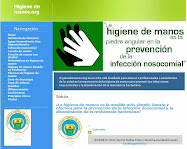Frogs may be useful for developing new antibiotics

Antibiotic compounds found in the skin secretions of some species of frogs could hold the key to treating antibiotic-resistant bacteria, according to researchers from Abu Dhabi.
Frog skins are moist and contain secretions of antimicrobial peptides — small molecules made up of amino acids — that kill bacteria and other micro-organisms, helping the animals to fight off pathogens.
Speaking at the National Meeting of the American Chemical Society in Boston, United States, today (26 August), lead researcher Michael Conlon, a biochemist at United Arab Emirates University, in Al-Ain, said that so far around 200 antibiotic compounds had been identified in frog skin secretions, and some could soon be developed into new antibiotics.
"My lab has in the last year or so focused very much on African frogs and we have discovered quite a number of very interesting, very potent peptides," Conlon told SciDev.Net.
But the problem is that many peptides from frog skin secretions are also toxic to humans.
Conlon and his team have been tweaking the peptides' molecular structure so that they are more effective at killing bacteria but less toxic for the patient. Bacteria such as MRSA, which are difficult to treat because of antibiotic resistance, have never been exposed to such peptides.
"We have shown, at least in the laboratory, that they [the peptides] will kill them [drug-resistant bacteria]," Conlon said. He added that some of the substances could progress towards to clinical trials within five years.
Although many antimicrobial peptides had been found since research in this area started in 1987, "Conlon's team seem to have isolated particularly potent ones that are strongly inhibitory towards some multi-drug-resistant bacteria," said John Ward, molecular microbiologist at University College London.
But Tim Walsh, a researcher specialising in drug-resistant bacteria at Cardiff University, in the United Kingdom, said more information was needed to ascertain if the peptides are effective against MRSA and other superbugs.
"Efforts such as this one might lead to new discoveries, and I think that the systematic screening of a large number of compounds is the right approach, but it is still very early to judge the potential of this for bringing about a new antibiotic that can be used to treat patients," said Andreas Heddini, executive director of ReAct – Action on Antibiotic Resistance.
Anibal Sosa, director of Alliance for the Prudent Use of Antibiotics said he hoped that collaborative research between developing and industrialised countries could shed new light on the potential for such antibiotics.
But scientists will have to work fast to beat the biodiversity loss. "There are around 6,000 species of frogs and they are disappearing at a frightening rate," Conlon told SciDev.Net.






No hay comentarios:
Publicar un comentario
Muchas gracias por su visita. Es bienvenido su valioso comentario.